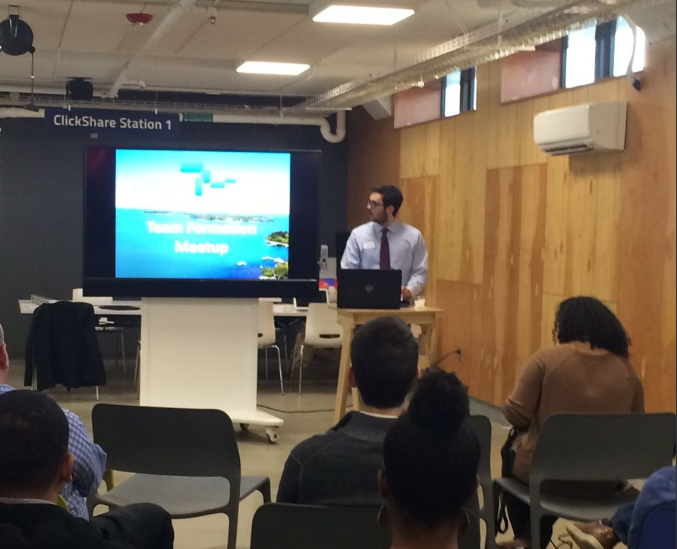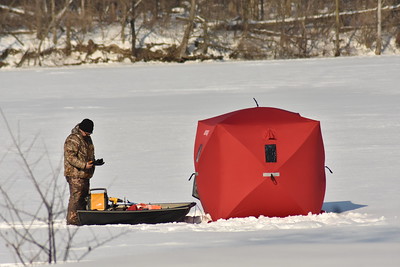
By Elizabeth Miller from Great Lakes Today
Pollution and other problems plague areas all over the Great Lakes region. And they can make drinking or swimming dangerous. There’s plenty of blame to go around for this – city water utilities, agriculture, and politicians to name a few.
Now an unlikely industry has joined the search for solutions — technology is taking on Lake Erie.
Audio Player“Hackathons” are widespread throughout the world — weekend-long events aimed at solving a problem with technology and new software. Teams form, develop an idea, and present it all in a couple of days.
Erie Hack is doing just that, but a little differently. It’s a months-long competition focused on finding solutions to Lake Erie’s biggest problems, including toxic algae blooms that can contaminate drinking water.
And it’s the first time a Great Lake has ever been “hacked.”
“What we’re interested in is how can we drive meaningful data to better manage our water systems, and create new innovations, new systems,” said Bryan Stubbs, executive director of the Cleveland Water Alliance, which is hosting Erie Hack. “What else has brought together, Detroit, Toledo, Cleveland, Buffalo, Erie, Windsor into one sentence?”
Teams are forming now and developing projects to compete in each city this spring. The grand prize is $40,000 in cash and thousands of dollars’ worth of business consulting services.
At a recent meet-up on Cleveland’s Case Western Reserve University campus for folks interested in the competition, members of team Waterseed 7 met in person for the first time.
The team formed online and includes educators, businessmen, and a couple of high school students. They want to connect the community to the value of clean water.
High school senior Tanya Messom, who is on the team, said, “When you look out at the lake, you feel like, ‘Oh, I guess is just how it’s going to be,’ and you find out you can actually make an impact and you can actually help with this problem.”
Team leader Jefferson Jones says the goal is to create a virtual reality version of Lake Erie. “It’s a simulation, it’s a gamified simulation which will entertain people as well as educate them.”
Other Erie Hack team ideas include using robots to clean up shoreline debris and monitoring pollution with tiny sensors.
Waterseed 7 member Jeff Lachina says technology can do something that environmental rules and regulations cannot.
“It’s immediate, its evocative, you can grab people’s attention,” said Lachina. “At the same time you’re feeding them information that they can assimilate and make part of their lives.”
A new website proves that. After a do-not-drink advisory was placed on Toledo, Ohio’s water in 2014, several laws were passed and goals set to reduce the amounts of nutrients – phosphorus and nitrogen, for example – that cause problems in Lake Erie.
The Toledo Lucas County Sustainability Commission’s website maps the sources of those nutrients in Lake Erie’s Western Basin, which includes Toledo. Since the website was released earlier this year, Melissa Greene Hopfer, who worked on the project, says it has helped researchers, environmentalists, and the public.
“You can go in and type in your address,” said Greene Hopfer. “It will actually show you what is around your area, which tributaries do you live near, are there any discharging industries near you?”
The tool also maps water sampling locations and large farming operations. In the future, Greene Hopfer says the tool will be able to identify amounts of pollution in the basin.
The Great Lakes Observing System is sponsoring this aquahacking competition. For nine years, the organization has aggregated information from agencies and academic research to create a data portal open to anyone.
The portal features weather forecasts, water temperature, and information on lake currents. Executive Director Kelli Paige says having this bank of data can help everyone from researchers to beach directors make better decisions when it comes to managing the Great Lakes.
“It’s important for us to have as complete a picture as we can about the conditions of the Great Lakes, or how things change seasonally or from year to year,” said Paige.
Back at the Erie Hack meetup, Waterseed 7 leader Jones says winning the competition is one team goal – but it’s not the only one.
“We really do look at it as a collaborative,” said Jones. “We want to inspire the other teams, and the other individuals we come in contact with to get involved and stay involved.”
More than 30 teams are competing around Lake Erie, and eight will head to the finals in Cleveland next month.




